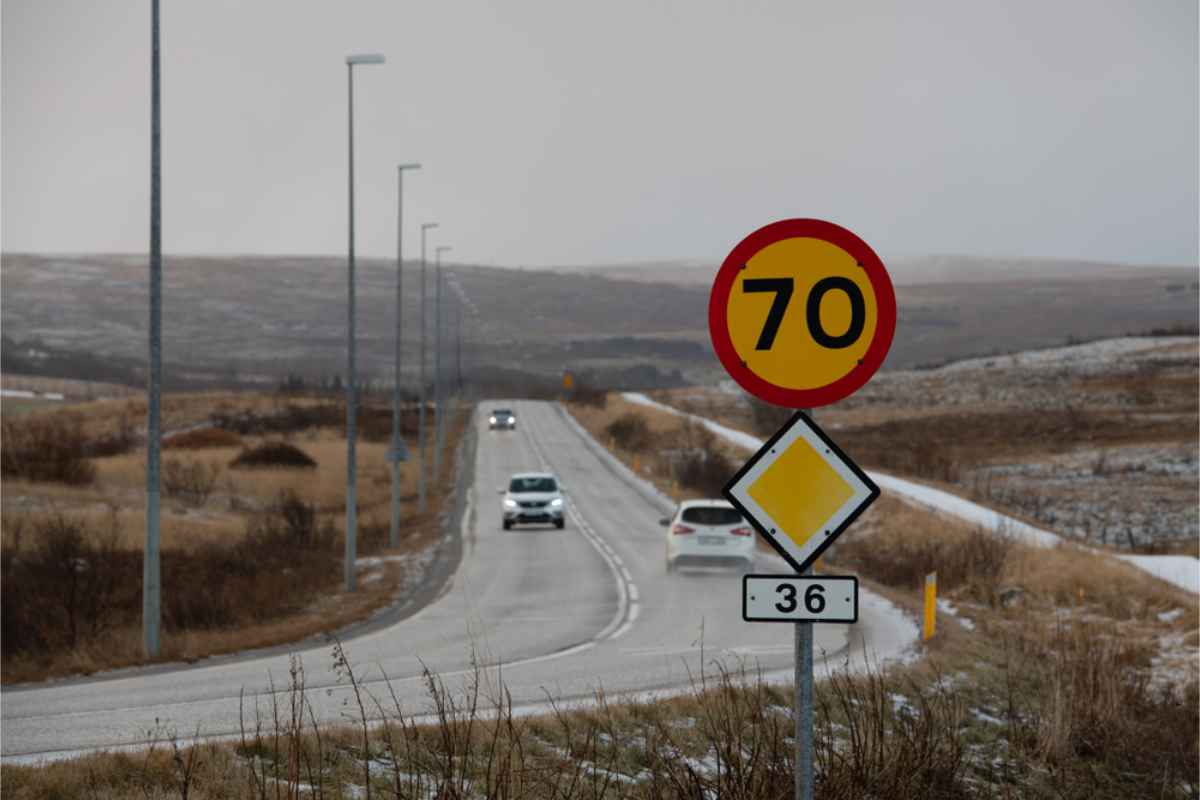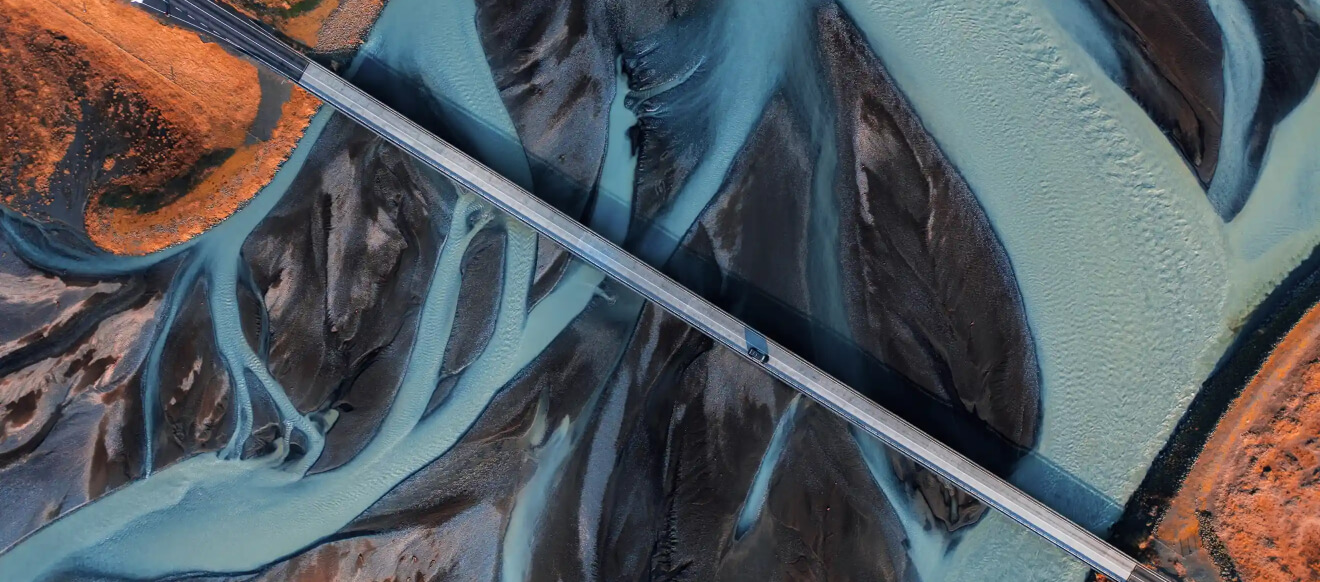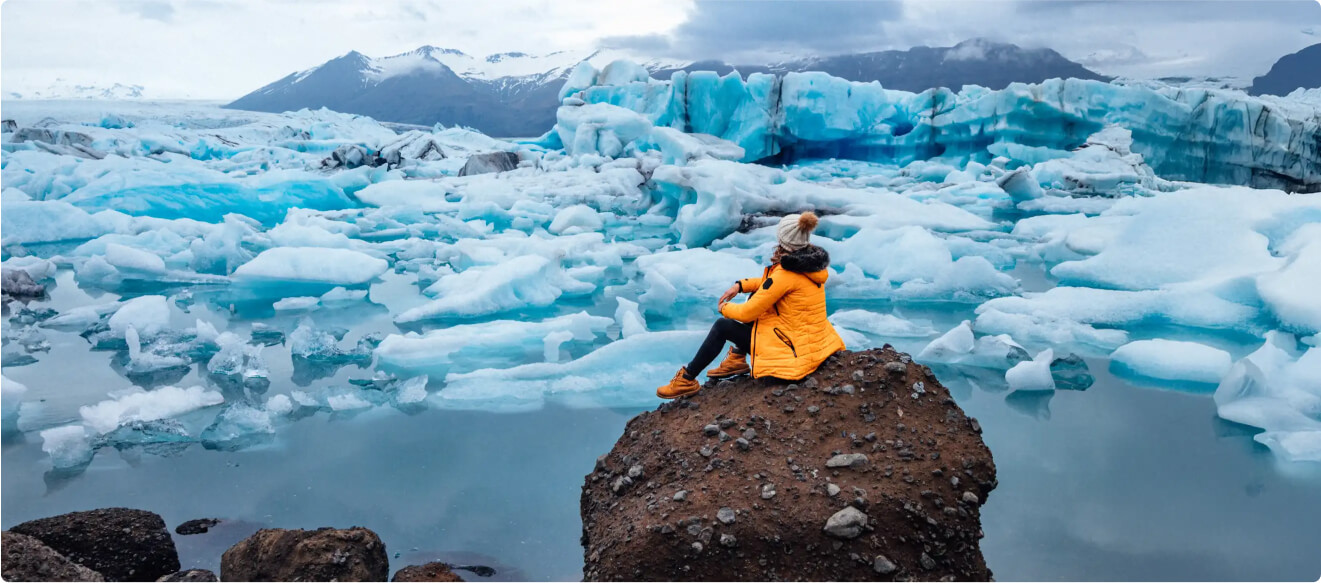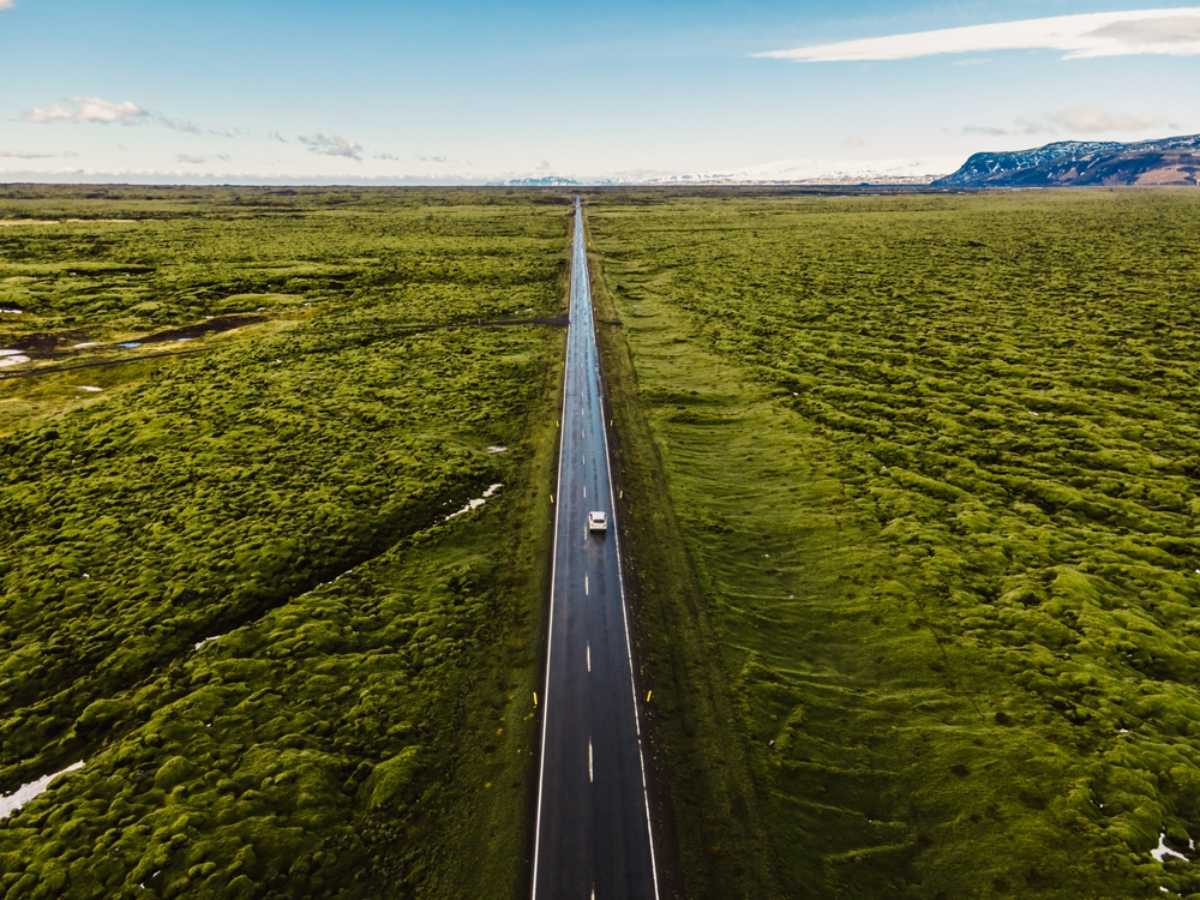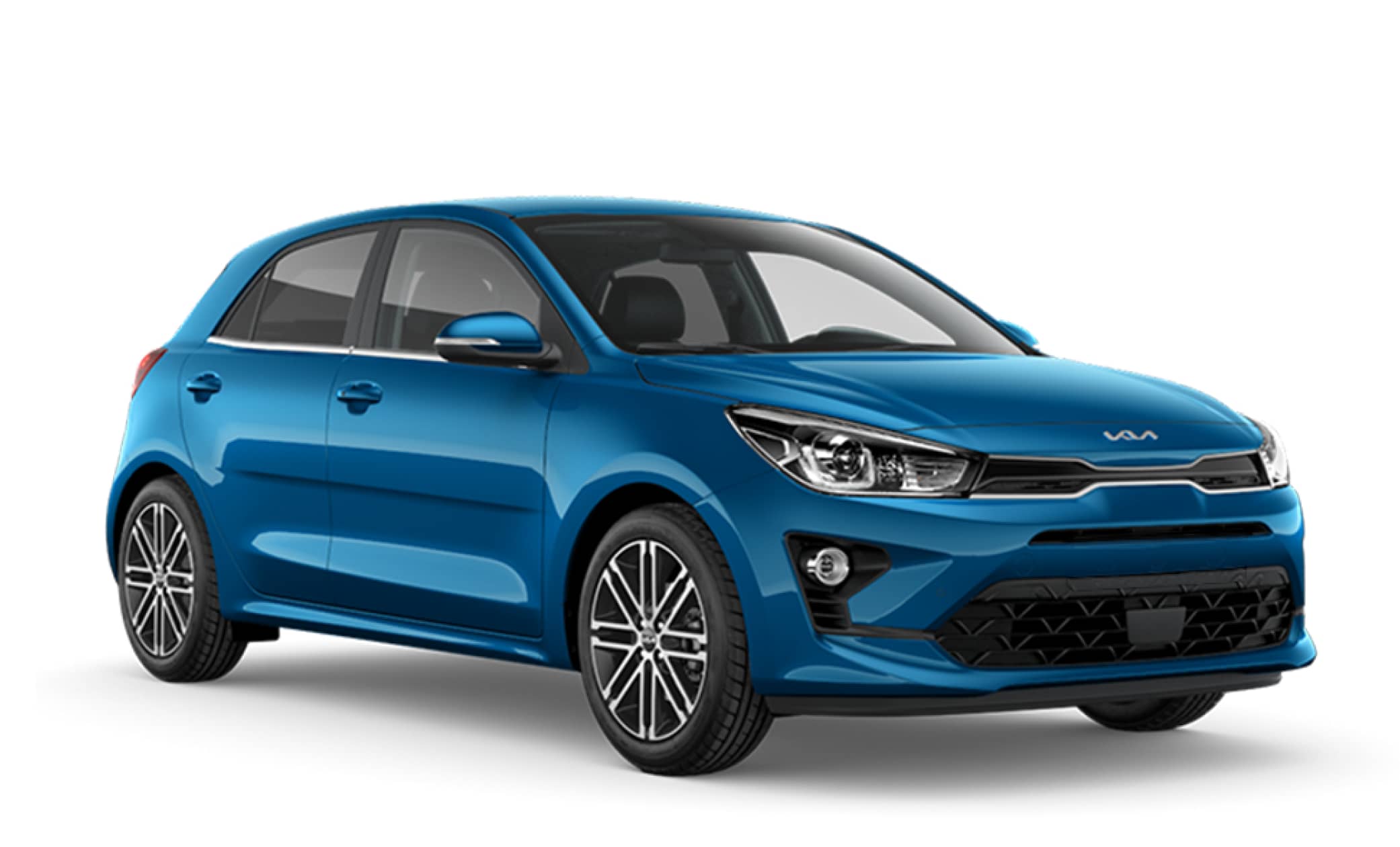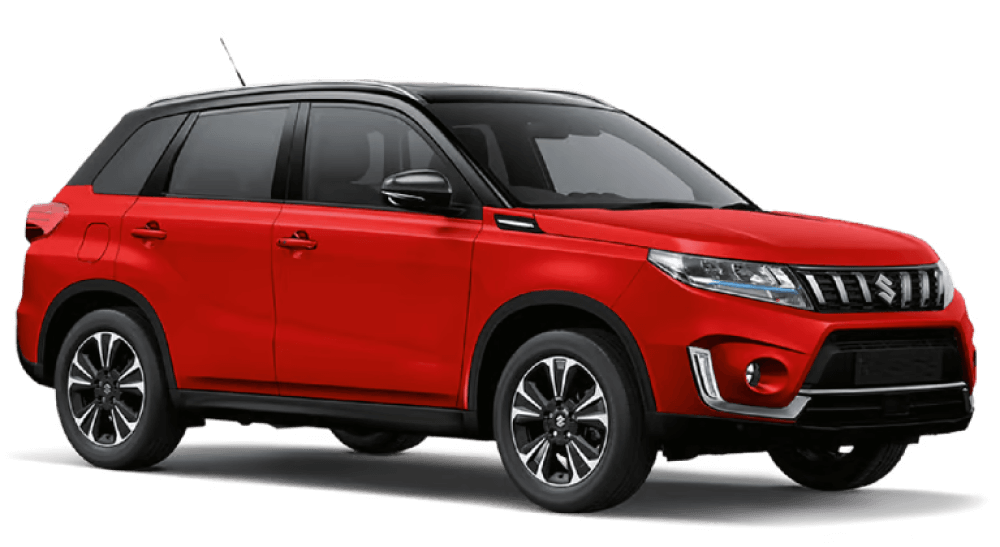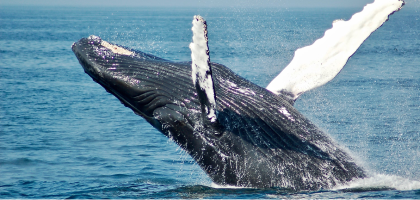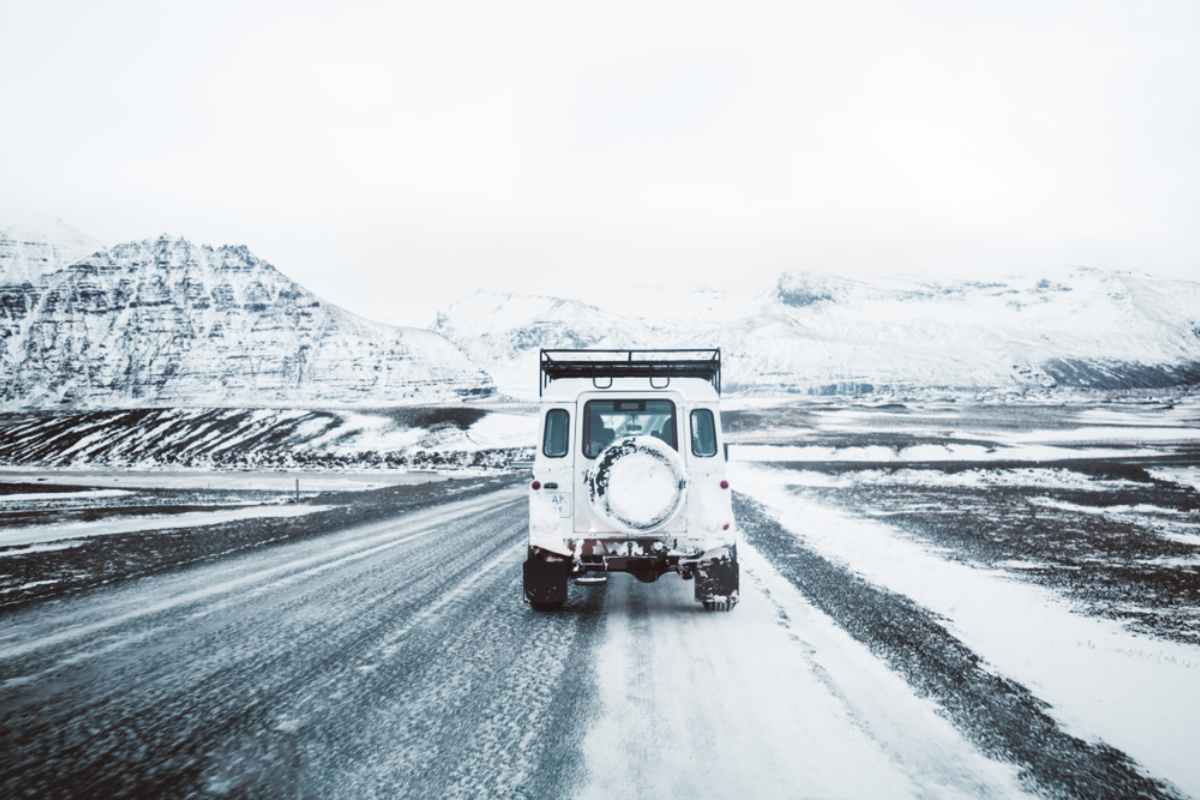You don’t need a PhD to figure out the Iceland speed limit. But if you treat it like a suggestion, you’re in for a surprise.
One that involves cameras, fines, and your rental agency draining your card faster than a waterfall in spring. Iceland isn’t just wild nature, it’s a country with rules. And they take driving seriously. Speeding here doesn’t just risk your safety, it messes with your insurance too.
So before you hit the Ring Road with a playlist and blind confidence, read this. You’ll learn how the Iceland speed limit actually works, not how Instagram thinks it does.
Why Are Speed Limits So Important in Iceland?
Speed limits in Iceland aren’t some boring rule in a brochure. They’re what stand between you, a cliff, and a very expensive moss restoration bill. Iceland’s moss-covered lava fields don’t bounce back. One wrong move off-road and the damage sticks around for decades (we love our moss).
Then there’s the Icelandic weather. It flips before your playlist does. Sunshine? Gone. Now it’s sideways hail and a gust strong enough to move your car. Mix that with blind corners, loose gravel, and someone doing 90 km/h (56 mph) like it’s the Autobahn and yeah, things get sketchy real quick.
The speed limit in Iceland protects locals, sheep, tourists, and anyone else crossing the road without warning.
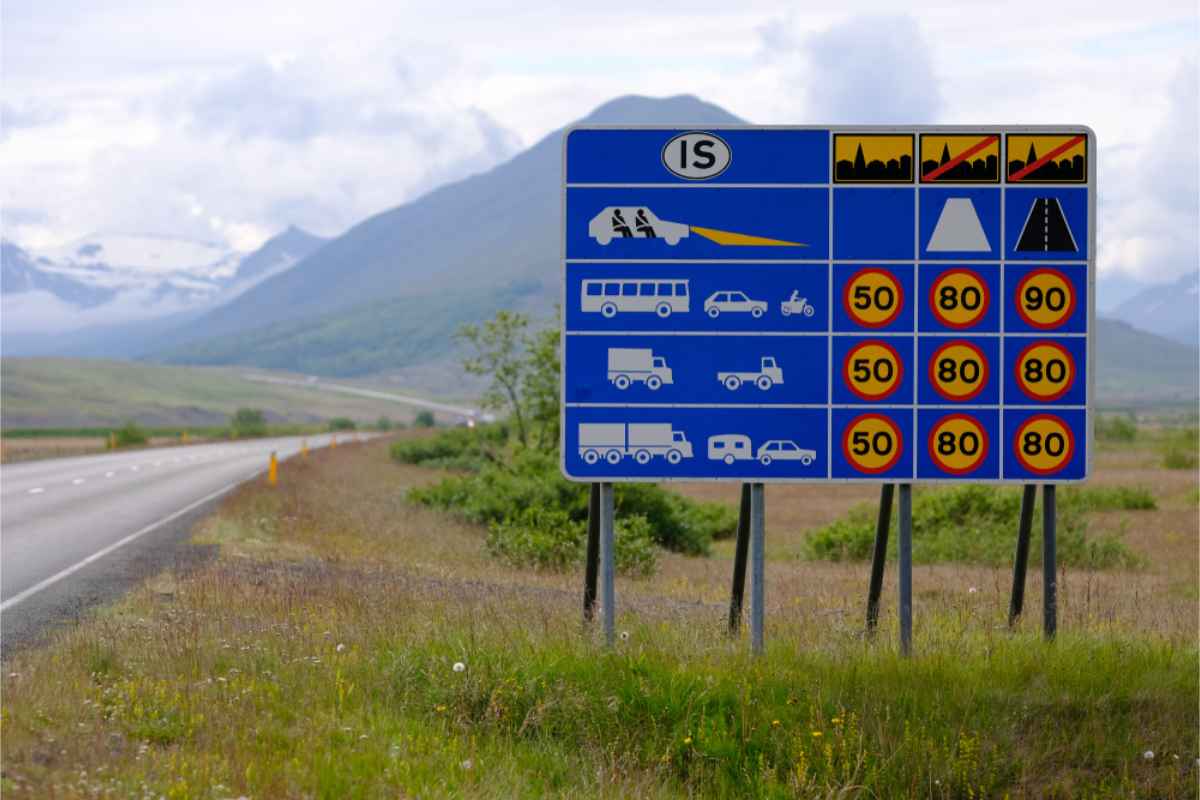
General Speed Limits in Iceland by Road Type
Before we break down the types of roads in Iceland and their speed limits, let’s get you set up with the right wheels. If you're still looking, rent a car in Iceland through us and skip the guesswork. All our vehicles are fully insured, road-trip ready, and winter-equipped for free.
| Vehicle Type | Urban Area | Gravel Roads | Paved Rural Roads |
|---|---|---|---|
| Buses, Cars, Motorcycles | 50 km/h | 80 km/h | 90 km/h |
| Trucks | 50 km/h | 80 km/h | 80 km/h |
| Vehicles with Trailers or Caravans | 50 km/h | 80 km/h | 80 km/h |
Urban Areas and Residential Zones
Speed limits in Iceland shift fast when you hit town. You’ll be cruising at 80 km/h (50 mph, give or take) and suddenly find yourself crawling at 50 or 30 km/h (31 or 19 mph). No flashing lights.
Just a lonely sign and a floating crosswalk daring you to ignore it. Towns like Hveragerði and Akureyri don’t play around with safety. Speed bumps show up near schools, bus stops, and anywhere kids might appear out of nowhere. Miss one, and your rental’s undercarriage will remind you.
Paved Roads
The Iceland speed limit on paved roads sits at 90 km/h (56 mph). Sounds fine. Until you hit a one-lane bridge with a blind curve and a sheep standing dead center in the road. These roads are clean, sure, but they’re not autopilot-friendly. Locals fly. Tourists wobble.
Trying to keep pace usually ends with brakes squealing and passengers swearing. Don’t race the guy in the Hilux. He’s done this at 90 km/h (56 mph) a thousand times. You haven’t.
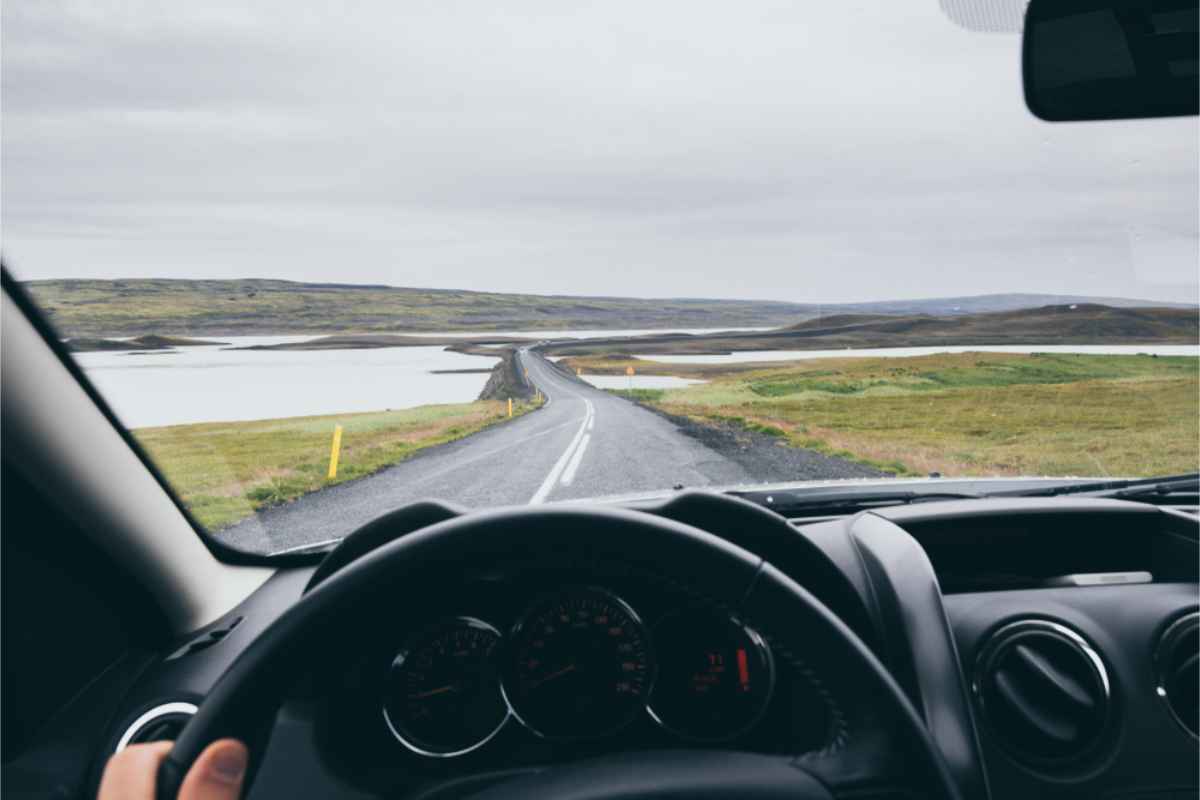
Gravel Roads
The Icelandic speed limit on gravel roads is 80 km/h (50 mph). Don’t count on reaching it though. These roads feel loose the second your tires hit them. Turning? Sloppy. Braking? Takes longer than you think. Most of them aren’t flat either.
Ruts, dips, and sudden soft patches force you to adjust constantly. You’ll find gravel routes all over the Westfjords and the Highlands. Remote tracks too. Locals slow down without thinking. Tourists don’t, and that’s how they end up off the road. The limit is printed on a sign. The safe speed? That’s up to you. And the surface.
F-Roads and Mountain Roads
There’s no fixed speeding limit in Iceland for F-roads. Going beyond 50 km/h (31 mph) isn’t just risky, it’s reckless. Most people drop to around 40 km/h (25 mph) once the terrain starts kicking back.
You won’t see tour buses here. These routes demand clearance, grip, and full focus. They’re made for serious 4x4s only. Rental companies ban small cars for a reason. You’ll hit steep climbs, loose rock, sudden river crossings, and stretches with nothing but a cliff on one side and regret on the other.
Speed Limits on Popular Tourist Routes
Ring Road
Iceland’s speed limit on the Ring Road usually sits at 90 km/h (56 mph). Until it doesn’t. Roll into a village and suddenly it’s 70 or even 50 km/h (43 or 31 mph). No warning beyond a lonely sign. Tourists miss it all the time. The road looks open, straight, and easy. Then someone’s going too fast into a bend or braking late at a crossing. It happens a lot.
Also, watch out for tractors pulling onto the road from a farm. One-lane bridges appear without much warning, and some tunnels don’t give you space to react. Slow down before gravel patches and tunnel entrances.
Golden Circle
The speeding limit in Iceland along the Golden Circle typically ranges from 70–90 km/h (43–56 mph). You won’t hold that pace for long. Traffic builds fast, especially near Thingvellir National Park and Gullfoss, where the signs drop and so does everyone’s patience.
Tour buses make sudden stops. Rental cars drift off into viewpoints like it’s a game of musical chairs. You’ll speed up. Then crawl. Then slam the brakes when someone veers without using their indicator. It’s not hard to drive this route.
It’s hard to drive it smoothly. Watch the signs, expect the slowdowns, and don’t let the open road trick you. It’s busy out there.
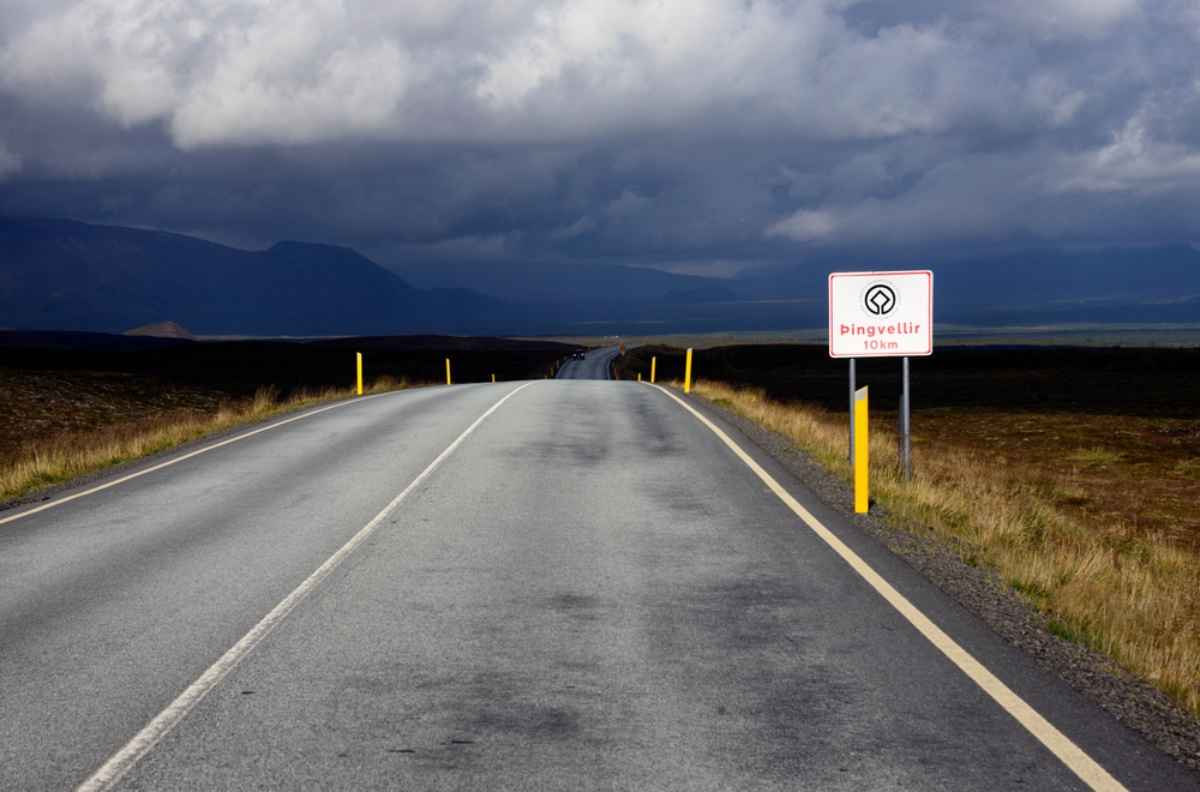
South Coast and Arctic Coast Way
The Iceland speed limit on the South Coast usually says 90 km/h (56 mph) on paper. In reality, wind will shove your car sideways and sand might blind you mid-turn. That number doesn’t mean much when the weather takes control. Up north on the Arctic Coast Way, it's quieter.
But tighter. Narrow roads, blind hills, and patches of gravel that come out of nowhere. Local drivers know every dip. You won’t. Fog moves fast. Snow sticks around longer than it should. You’re not racing anyone out here. Just trying to stay between the lines. Sometimes that means crawling when the sign says go.
Westfjords and Remote Areas
The speed limit in Iceland won’t help you out here in the Westfjords. Doesn’t matter what the sign says. These roads twist, shift, and vanish without warning. One stretch is gravel.
The next, pavement with a corner you didn’t see coming. The legal limit says 80 or 90 km/h(50 or 56 mph). You won’t get close. Most drivers drop to 30 or 40 km/h (19 or 25 mph) without thinking. Faster than that feels reckless.
Corners are sharp. Drop-offs are unmarked. And speed signs? Rare. Out here, you drive by instinct.
Speed Road Signs to Know Before You Hit the Road
When driving in Iceland, it's super important to pay attention to road signs. They’re not just there for decoration! They can help you avoid tricky situations (and fines), and keep you and your passengers safe. Here's a quick rundown of the most useful ones to look out for:
Recommended Speed Signs
These are blue square signs with white numbers on them. These don’t indicate the maximum speed; they’re there to recommend a safer speed based on road conditions, curves, or other local hazards. While they’re not legally binding, it's smart to follow them, especially when driving in unfamiliar terrain.
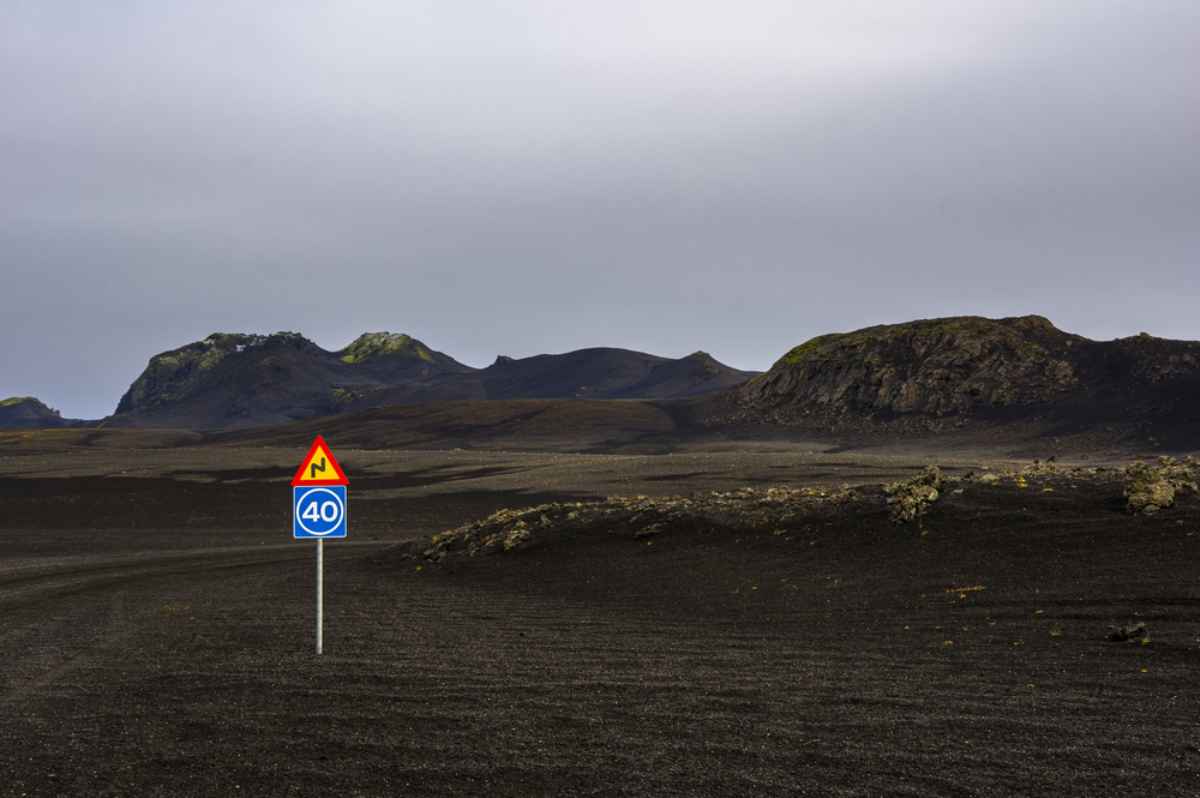
Other useful traffic signs in Iceland to know
Speed limit signs are yellow circles with red borders and black numbers. They mark the maximum allowed speed and are strictly enforced.
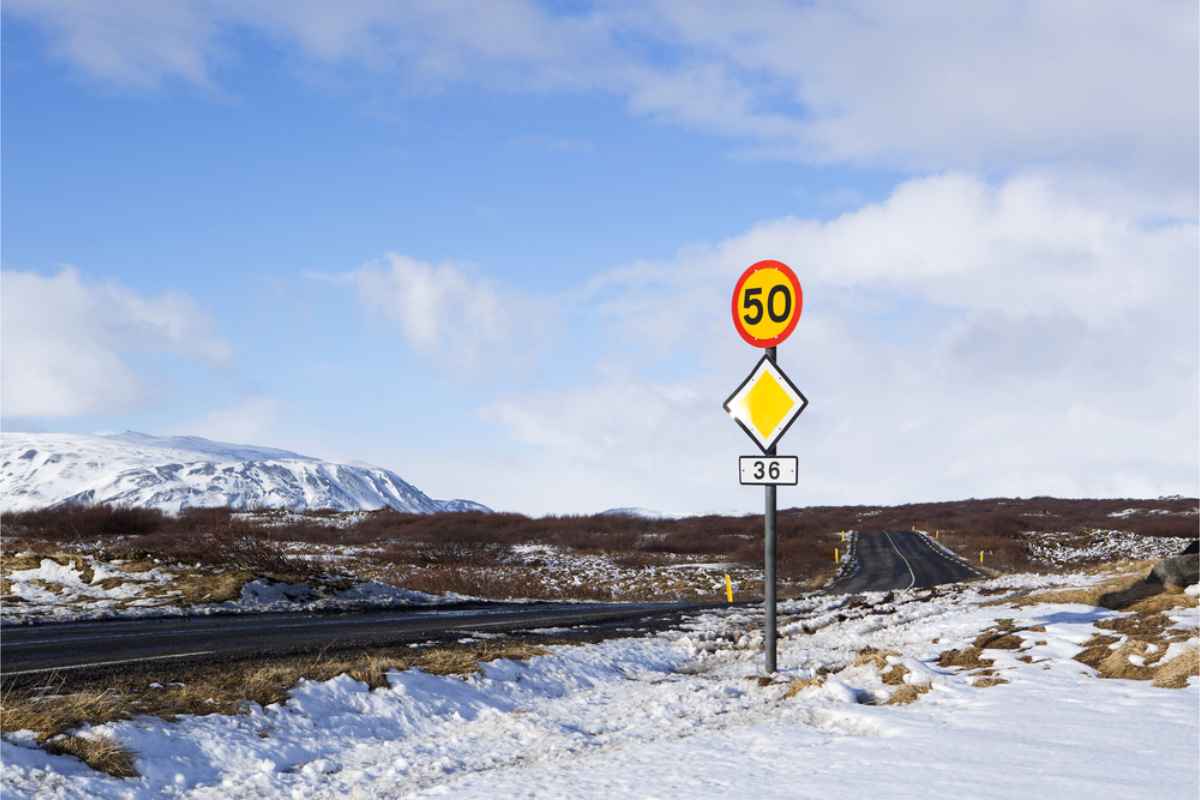
“Malbik Endar” means “paved road ends”. this is your warning that you’re about to hit a gravel road. Slow down, as these can get slippery or rough fast.
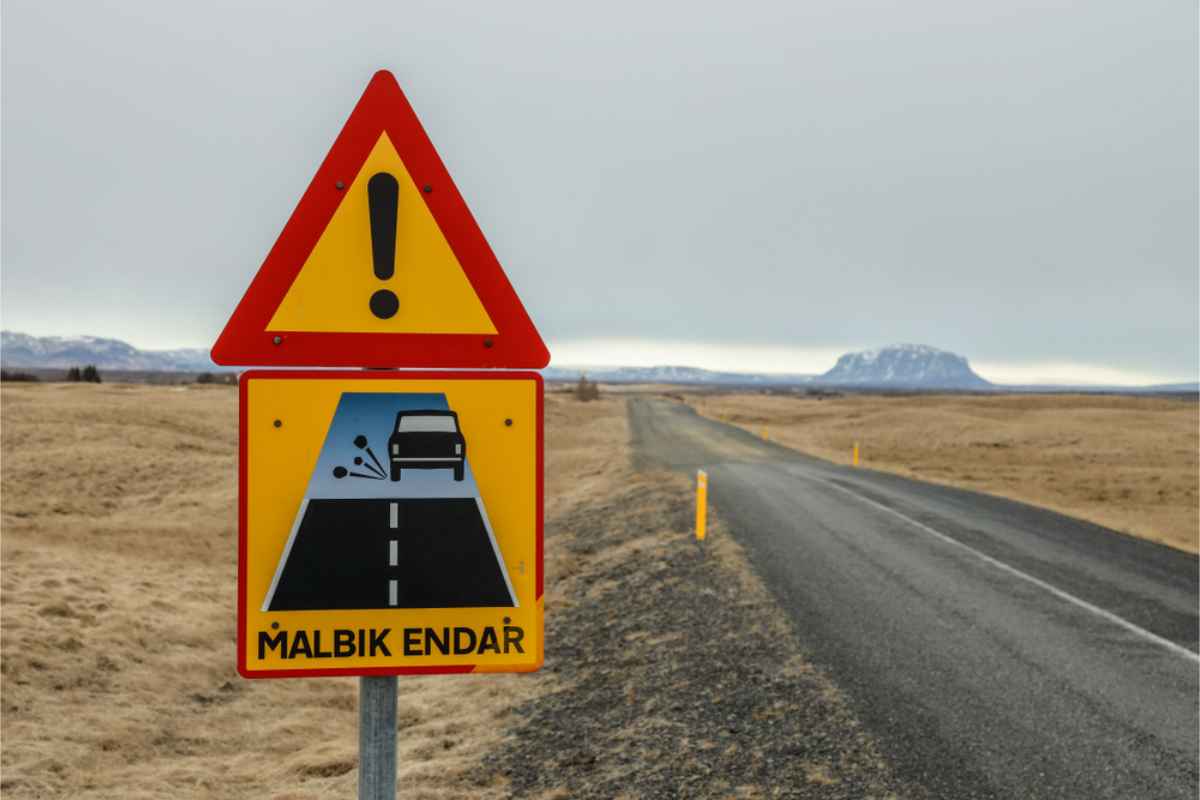
4x4 Required signs usually pop up before river crossings or on F-roads. If you see one, make sure you’re driving a vehicle that can handle it; regular cars aren’t allowed!

Single-lane bridge signs tell you only one car can cross at a time. Slow down and yield to whoever's closer.

Animal crossing signs are your heads-up that sheep, reindeer, or horses might be on the road...and they often are!
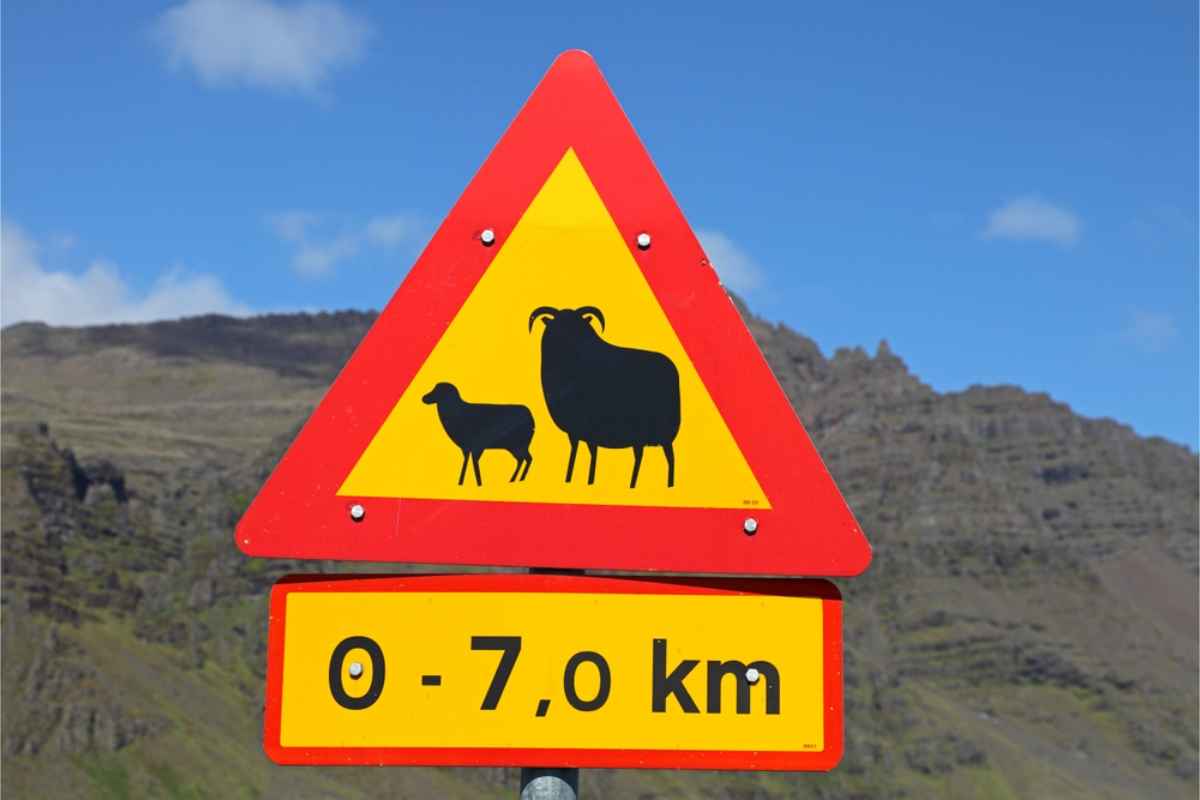
When Not to Follow the Posted Speed Limit
Adapting to Weather and Road Conditions
Speeding limits in Iceland are just the starting point. What actually matters is the road beneath you and the sky above. Legally, you’re expected to adjust your speed based on conditions, not just follow the sign. Rain turns pavement slick.
Fog cuts your visibility to nothing. Wind shoves you sideways. Loose gravel? Forget grip. Even in July, storms can slam into the East or the North without warning. That nice 90 km/h (56 mph) stretch suddenly isn’t so friendly. Locals slow down without thinking. Tourists don’t. Until they have to, out here, speed isn’t about rules. It’s about staying upright.
Driving in Winter or During Storms
The limit of speed in Iceland doesn’t mean much once the snow hits. Or the ice. Or both. While driving in Iceland during winter, roads disappear under slush. What looks dry might not be. One second of black ice and you're sliding sideways with no warning. Locals slow down without blinking.
Tourists? Not always. Then they learn. A legal 90 km/h (56 mph) means nothing in a whiteout. If you're in a taller vehicle, the wind grabs you harder. It pushes. You correct and overcorrect. Visibility drops fast. If you can't see, stop. Not later. Right then. Speed won’t save you here. Caution might.
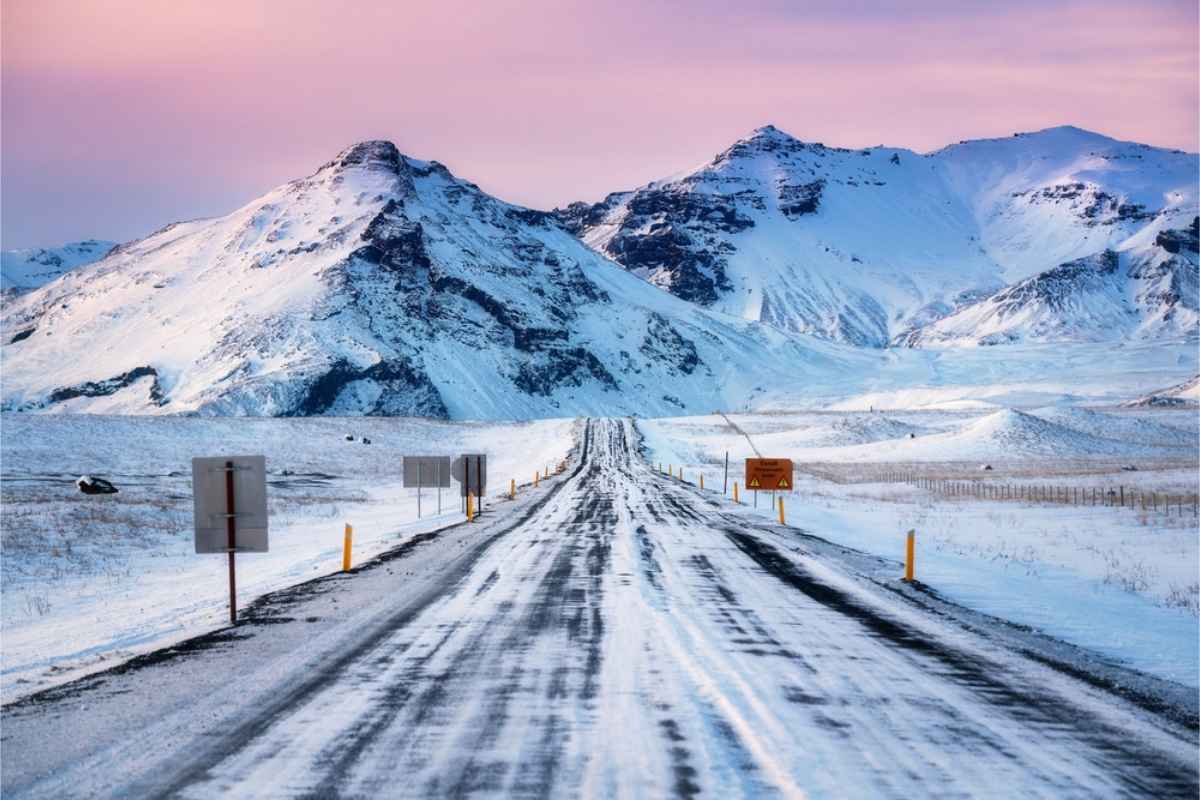
Speed Enforcement in Iceland
Speed Cameras: What to Expect
Speed cameras don’t care if you missed the sign. The limited speed in Iceland is enforced with fixed cameras all over, even out in the countryside where you think no one’s watching. Most sit on plain gray poles by the roadside.
No lights. No warnings. Go 5 or 10 km/h (3 to 6 mph) over and they’ll still snap you. The fine? Sent straight to your rental agency. Then forwarded to you with a lovely handling fee on top. Police don’t track your GPS, but some rental companies might. If you’re speeding, they’ll know. And yes, they will charge you for it.
Speed Bumps and Floating Crosswalks
Traffic signs in Iceland are only part of the equation. In towns and near schools, the real speed control shows up under your tires. Speed bumps aren’t rare. Some towns drop them every 20 meters (66 feet). Heights vary.
You’ll hit some at 91 centimeters (36 inches), others closer to 30 centimeters (12 inches). Doesn’t matter. You’ll feel all of them. Then there’s Ísafjörður’s floating crosswalks. Not actually floating, just painted to look like it.
The 3D stripes mess with your depth perception and force your foot to brake. Subtle, and smart. Works every time. Keeps people safe.
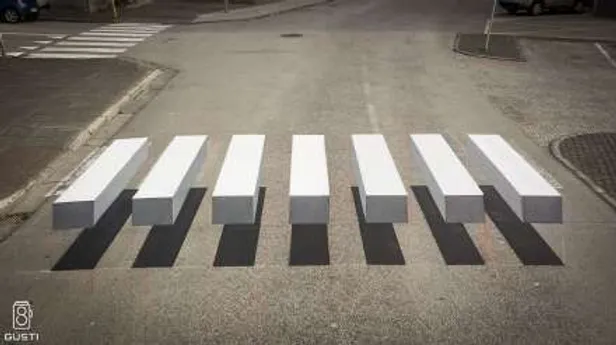
Fines for Speeding in Iceland
How Much Will You Pay?
Speeding fines in Iceland are strict and costly, especially for tourists in rental cars. Fines depend on how much you exceed the limit.
|
Violation |
Speed Limit (km/h) |
Speed Limit (mi/h) |
Fine (USD) |
|
26km/h over in a 30–35km/h zone |
30–35 |
19–22 mi |
195 |
|
36km/h over in a 50–60km/h zone |
50–60 |
31–37 mi |
345 |
|
41km/h over in a 70km/h zone |
70 |
43 mi |
460 |
|
41km/h over in 80–90km/h zones |
80–90 |
50–56 mi |
652 |
How to Pay a Fine and Save Money
Speed limit fines in Iceland aren’t just expensive. They’re sneaky. You might get one on the spot, or it might show up in your inbox two weeks later. Either way, paying early helps. Settle it within 14 days and you get a 25% discount.
That applies to all fines, no matter how they’re issued. You can pay with a credit card roadside, online, via bank transfer, or at any post office. If you rented a car, the fine usually arrives at the rental company first. Then your card. With a bonus admin fee. Pay fast. It’s cheaper than pretending it’ll go away.
Speeding and Rental Car Insurance: What Tourists Need to Know
Break the Icelandic speed limit, and you risk more than a fine. Most rental agreements include basic coverage like Third-Party Liability (TPL) and Collision Damage Waiver (CDW), but if you’re speeding when something goes wrong, that coverage can vanish.
Police notify the rental company, and the fine usually shows up on your credit card with an added fee. Expect $195 to $700, plus another $35 to $70 for the admin charge. Even with Super CDW or Premium protection, speeding can still void parts of your insurance. Crash while over the limit, and you're paying.
Tips for Driving Safely and Respectfully in Iceland
Stay on the Road and Never Off-Road
Off-roading in Iceland? Don’t. It’s illegal. Not ‘grey area’ illegal. Full fine, full penalty, no excuses. What looks like a path probably isn’t. Drive off it and you're looking at a 350,000 ISK fine (around 2,900 USD).
Some pay more. And for what? One shortcut that scars the land for decades. Moss doesn’t grow back next week. It barely grows at all. You don’t see the damage right away, but it stays. Locals hate it. Rangers fine it. If you saw someone do it online, good for them. You’re the one who’ll get caught. Stick to the road. All of it.
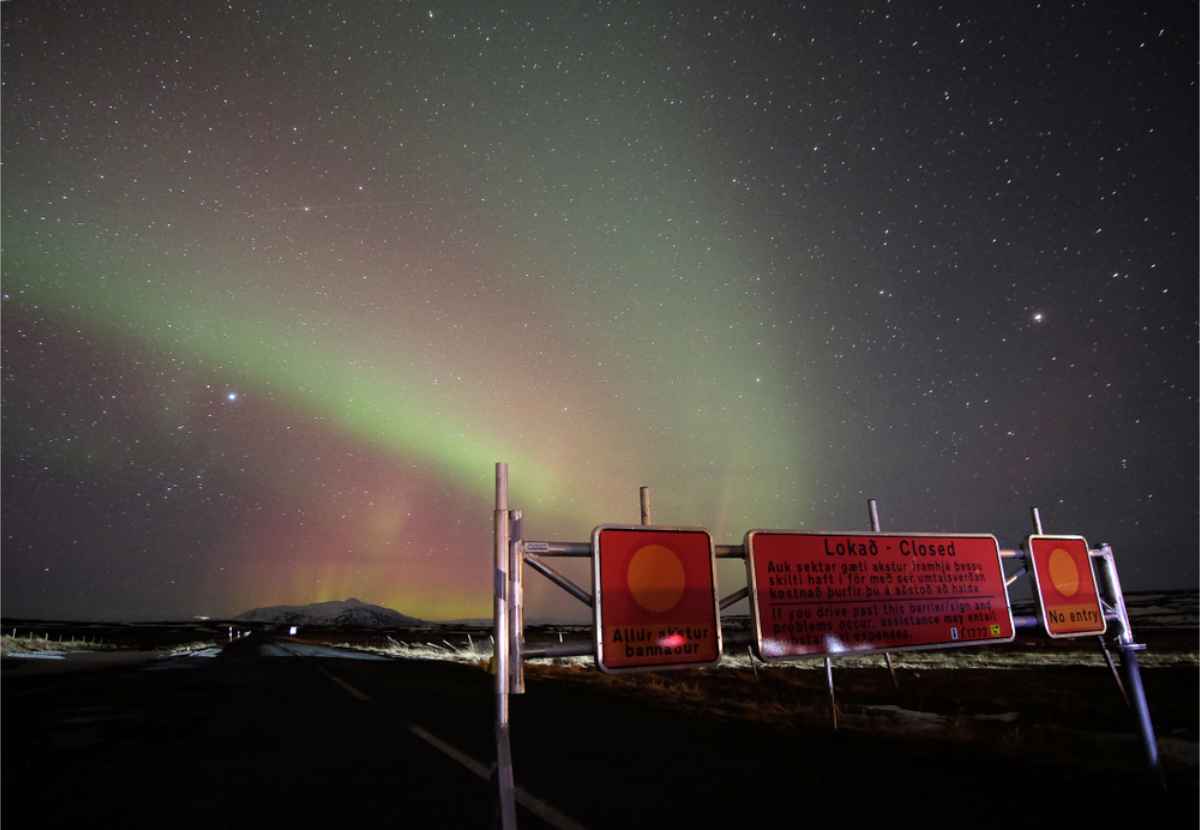
Always Wear Your Seatbelt
Seatbelts aren’t optional in Iceland. Not in the front, not in the back, not even on that quiet gravel stretch in the middle of nowhere. The rule is simple. Buckle up or pay. Police check often, especially near tourist-heavy routes and risk zones. If they catch you without a belt, expect a fine on the spot.
Around $150 per person, no warnings. And yes, both driver and passenger get hit. Doesn’t matter if you were going 30 km/h (19 mph) or 90 km/h (56 mph). The law covers every road in the country. Clip in before you move. Every time.
Follow Local Driving Etiquette
Driving here isn’t complicated. Just don’t be that tourist. Let locals pass. If someone’s behind you on a narrow stretch, use the turnout. They’re part of the road. Stopping in the middle to snap a photo? Don’t.
It’s not safe and people will notice. Icelandic drivers rarely honk. They skip straight to reporting you. One more thing. Headlights should stay on 24/7. It doesn’t matter if the sun’s out or the sky’s clear. Keep them on. It’s the law, and they actually mean it.
Likewise, always overtake other vehicles on the left-hand side.
Iceland has a strict alcohol limit of 0.05%, so never drink and drive. When passing a cyclist, make sure to leave at least 1.5 meters of space for their safety. Keeping all of these in mind will ensure a safer experience on the Icelandic road!
Break the Iceland Speed Limit and Pay for It
The Iceland speed limit isn’t there to ruin your trip. It’s there so you finish it. These roads might look like a driving dream, but they bite back fast. One curve too quick, one tunnel too confident, and suddenly that photo stop turns into a problem.
Know the limits. Follow them. It saves you money, saves you stress, maybe even more than that. The best road trips aren’t the fastest. They’re the ones you finish smiling, not calling for help. Need the right wheels for the job? Check out our rental fleet and hit the road with confidence. Iceland’s waiting. Drive smart.




